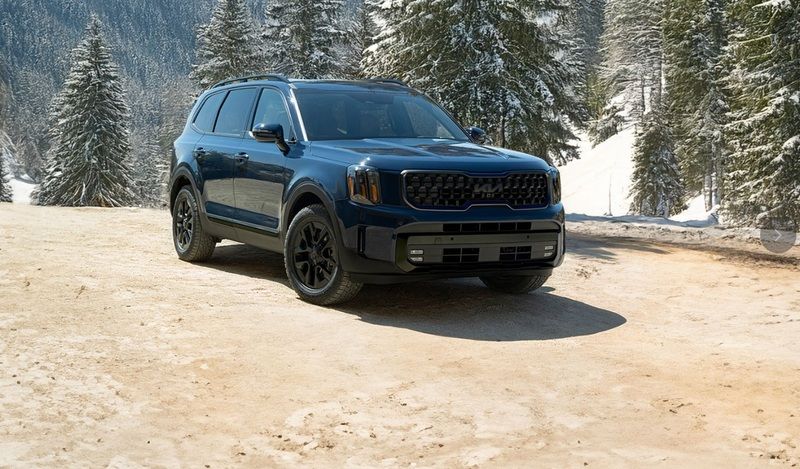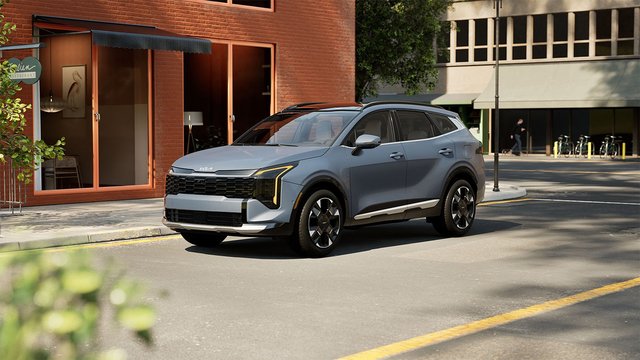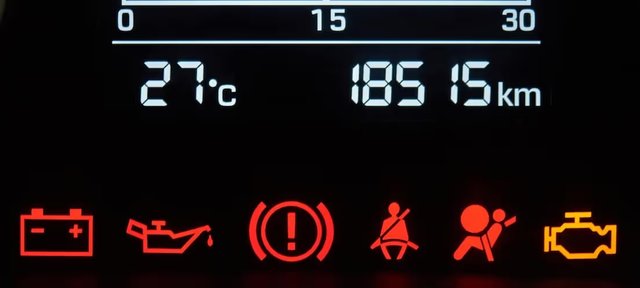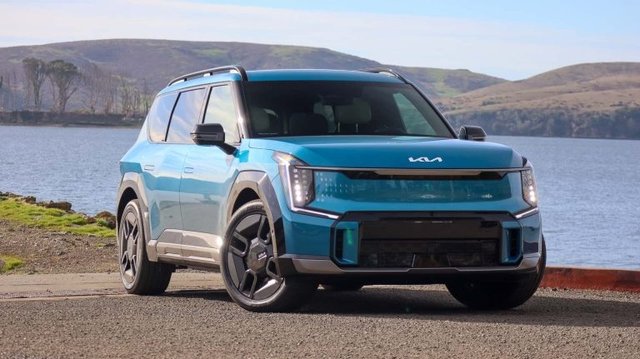Learn essential tips for buying your first car in Canada as a newcomer, from obtaining a license to understanding financing options
Moving to a new country brings countless challenges, and for many newcomers to Canada, purchasing a vehicle quickly becomes a necessity rather than a luxury. Canada's vast geography, sometimes harsh winter conditions, and varying public transportation infrastructure make car ownership particularly important for immigrants settling into their new lives.
Unlike countries with dense urban centers and comprehensive public transit systems, many Canadian cities and towns sprawl across large areas, making daily commutes without a personal vehicle challenging. Additionally, the Canadian winter, with its snow-covered roads and frigid temperatures, can make walking or cycling impractical for several months of the year.
As a newcomer, you'll face unique challenges in the car-buying process that Canadian-born residents typically don't encounter. These include establishing credit history, understanding provincial licensing requirements, and navigating financing options with limited or no Canadian financial history. This comprehensive guide will walk you through the essential considerations when purchasing your first vehicle in Canada, helping you make informed decisions while avoiding common pitfalls.
What You Need to Buy Your First Car in Canada
Valid Driver's License
Before considering a vehicle purchase, you must be legally able to drive in Canada. Each province and territory has licensing requirements, though the basic process remains similar across the country.
If you're a new immigrant with a valid driver's license from your home country, you may be able to use it temporarily, typically for 60 to 90 days after arrival. However, the rules vary significantly by province and your country of origin:
- Ontario: New residents can use a valid foreign license for 60 days
- British Columbia: Foreign licenses are valid for 90 days
- Quebec: Foreign licenses can be used for up to 6 months
- Alberta: You can drive on a valid foreign license for up to 90 days
You'll need to obtain a Canadian driver's license for permanent driving privileges. Many provinces have reciprocal agreements with certain countries, allowing drivers to exchange their foreign licenses for Canadian ones without taking a written or road test. For example, Ontario has exchange agreements with about 40 countries, including the United Kingdom, Australia, and Germany.
If your country doesn't have a reciprocal agreement, you'll likely need to:
- Pass a vision test
- Complete a written knowledge test about Canadian driving rules
- Pass one or two road tests (depending on the province)
Each province has its own transportation ministry website where you can find specific information:
- Ontario: Ministry of Transportation
- British Columbia: Insurance Corporation of British Columbia (ICBC)
- Alberta: Alberta Transportation
- Quebec: Société de l'assurance automobile du Québec (SAAQ)
When visiting a licensing office, bring your foreign license, immigration documents, proof of identity, and proof of Canadian residency.
Valid Credit Score
One of the biggest challenges for newcomers purchasing a vehicle in Canada is establishing credit history. Your credit score determines loan approval, interest rates, and financing terms.
As a new immigrant, you likely have no Canadian credit history, even if you had an excellent credit rating in your home country. Canadian financial institutions typically don't consider foreign credit histories when making lending decisions.
To build your Canadian credit score:
- Open a Canadian bank account: Establish a relationship with a financial institution as soon as possible.
- Apply for a secured credit card: These cards require a security deposit that becomes your credit limit. Using this card responsibly helps establish credit history.
- Pay bills on time: Consistent, timely payments for utilities, rent, phone, and internet services contribute positively to your credit profile.
- Consider a credit-building loan: Some financial institutions offer special newcomer programs to help establish credit.
- Become an authorized user: If you have a family member with good credit in Canada, becoming an authorized user on their credit card can help you build credit history.
Most financial experts suggest newcomers need at least 6-12 months to establish a credit history sufficient for major purchases like vehicles. During this time, make all payments on time and keep credit utilization below 30% of your available credit.
What is a Credit Hit?
When shopping for a vehicle, be cautious about how your credit information is accessed. There are two types of credit inquiries:
Soft inquiries don't affect your credit score and typically occur when:
- You check your own credit
- A company checks your credit for pre-approval offers
- An employer conducts a background check
Hard inquiries can temporarily lower your credit score and occur when:
- You apply for a loan or a credit card
- A lender checks your credit as part of a formal application process
When visiting multiple dealerships, be careful about allowing each one to run a credit check. Multiple hard inquiries within a short period can significantly impact your credit score. Instead:
- Request your own credit report from TransUnion or Equifax before shopping
- Ask dealerships if they can provide preliminary information based on a soft inquiry
- Limit formal credit applications to when you're serious about a specific vehicle
Many dealerships will want to run a credit check before discussing specific financing options. Be clear about whether you're just gathering information or ready to make a purchase decision.
Lease vs. Finance: What's Better for Newcomers?
As a newcomer to Canada, choosing between leasing and financing can be challenging. Each option has distinct advantages and disadvantages based on your financial situation and long-term plans.
Financing (Buying) a Vehicle
Advantages for Newcomers:
- You'll own the vehicle after completing payments
- No mileage restrictions
- You can modify the vehicle to suit your needs
- Long-term cost savings if you plan to keep the vehicle for many years
- Building equity in an asset
Disadvantages for Newcomers:
- Higher monthly payments compared to leasing
- Requires a stronger credit history for approval
- Typically needs a larger down payment
- Responsible for all repair costs outside of warranty
- More difficult to qualify for as a new immigrant
Leasing a Vehicle
Advantages for Newcomers:
- Lower monthly payments
- Often easier to qualify for with limited credit history
- Many manufacturers offer special newcomer leasing programs
- Typically includes warranty coverage for most of the lease term
- Ability to drive a newer vehicle with modern safety features
- Option to purchase the vehicle at the end of the lease
Disadvantages for Newcomers:
- You don't own the vehicle
- Mileage restrictions (typically 20,000-24,000 km per year)
- Potential charges for excess wear and tear
- Early termination can be costly
- Less flexibility if your situation changes significantly
For many newcomers, leasing provides a more accessible entry point to vehicle ownership in Canada. Several manufacturers, including Kia, offer special newcomer programs with more flexible credit requirements for leases. These programs often require proof of employment and immigration status rather than an established credit history.
Short-Term vs. Long-Term Options
The length of your car loan or lease term significantly impacts your financial commitment and monthly payment amount.
Short-Term Financing (36-48 Months)
Benefits:
- Pay off the vehicle faster
- Build equity more quickly
- Pay less in total interest
- More flexibility to change vehicles sooner
- Vehicle typically remains under warranty during loan period
Drawbacks:
- Higher monthly payments
- May require larger down payment
- Can be more difficult to qualify for as a newcomer
Long-Term Financing (60-84 Months)
Benefits:
- Lower monthly payments
- Easier to fit into monthly budget
- Often easier to qualify for with limited credit history
- May allow purchase of a higher-quality vehicle
Drawbacks:
- Pay more in total interest over the life of the loan
- Longer period of negative equity (owing more than the car is worth)
- Vehicle may require repairs after warranty expires while payments continue
- Less flexibility if your needs change
For newcomers with limited credit history, longer terms are often more accessible. However, consider your long-term plans in Canada before committing. If you're uncertain about your long-term residency plans, a shorter lease might provide more flexibility than a long-term loan.
Additional Considerations for Immigrants
Insurance Requirements
Auto insurance is mandatory in all Canadian provinces and territories. Insurance costs vary significantly based on:
- Your driving history (including foreign experience)
- The vehicle type and model
- Your location in Canada
- Your age and gender
- Your daily commute distance
- Coverage levels
As a newcomer, you may face higher initial insurance premiums until you establish a Canadian driving record. Some insurers recognize driving experience from select countries, particularly those with similar driving conditions and rules.
Basic insurance coverage includes:
- Third-party liability: Covers damage you cause to others (minimum coverage requirements vary by province, typically $200,000-$500,000)
- Accident benefits: Covers medical expenses and lost income if you're injured
- Direct compensation property damage: Covers damage to your vehicle when another driver is at fault
- Uninsured automobile coverage: Protects you if the at-fault driver has no insurance
Additional coverage options to consider:
- Collision coverage: Repairs your vehicle regardless of fault
- Comprehensive coverage: Covers non-collision damage (theft, vandalism, weather)
- Rental car coverage: Provides a rental while your car is being repaired
Get quotes from multiple insurance providers, as rates can vary by 30% or more between companies for identical coverage. Many insurers offer newcomer packages or discounts for combining home and auto insurance.
Down Payment and Car Budgeting
A substantial down payment can offset limited credit history when purchasing a vehicle. Aim to save at least 10-20% of the vehicle's price as a down payment.
When budgeting for a vehicle, consider:
- Monthly payment: Should not exceed 15-20% of your monthly income
- Insurance costs: Can range from $100-$400+ monthly, depending on location and vehicle
- Fuel expenses: Consider a vehicle's fuel efficiency (rated in L/100km)
- Maintenance costs: Regular service, winter tires, and unexpected repairs
- Parking fees: Especially important in urban areas
- Registration and licensing: Annual fees vary by province
Many newcomers underestimate the total cost of vehicle ownership in Canada. Beyond the purchase price, expect to spend an additional 30-50% of your monthly car payment on operating expenses.
Used vs. New Cars for Newcomers
New Vehicle Advantages
- Full warranty coverage
- Latest safety features
- No hidden history or problems
- Special manufacturer newcomer programs
- More financing options
- Better fuel efficiency
Used Vehicle Advantages
- Lower initial cost
- Less depreciation
- Lower insurance premiums
- Potentially lower or no sales tax (in private sales)
- More vehicle for your budget
For newcomers with limited credit history, a quality used vehicle often represents the most practical first purchase. Consider certified pre-owned vehicles from dealerships, which offer warranty protection and have undergone inspection.
If purchasing a used vehicle, always:
- Request a vehicle history report (CarFax or CarProof)
- Have the vehicle inspected by an independent mechanic
- Check for open recalls on the model
- Test drive in various conditions (highway, city streets)
- Research the model's reliability and common issues
Canadian Vehicle Recommendations for Newcomers
When selecting a vehicle, consider Canada's climate and driving conditions. Some particularly well-suited models include:
Compact/Midsize Sedans:
- Kia Forte: Excellent value, good fuel economy (7.0-7.7 L/100km combined)
- Kia K5: Spacious midsize sedan with available AWD for winter driving
Crossovers/SUVs:
- Kia Seltos: Compact SUV with available AWD, starting at under $25,000
- Kia Sportage: Larger interior space with excellent winter capability
Minivans:
- Kia Carnival: Spacious family vehicle with advanced safety features
Look for vehicles with:
- All-wheel drive or front-wheel drive (better in snow than rear-wheel drive)
- Block heaters (essential in colder provinces)
- Electronic stability control
- Anti-lock braking systems
- Good ground clearance (15 cm or more) for snow conditions
Special Programs for Newcomers
Several Canadian financial institutions and manufacturers offer newcomer programs specifically designed for immigrants:
- Kia Canada New Canadian Program: Offers leasing and financing options with minimal credit history requirements.
- Bank newcomer programs: Major banks like RBC, TD, and Scotiabank offer special newcomer packages that can include car loan options with more flexible requirements.
- Credit union programs: Many credit unions provide more personalized service and greater flexibility for newcomers than traditional banks.
These programs typically require:
- Proof of landed immigrant or permanent resident status
- Valid Canadian driver's license or foreign license with international driving permit
- Proof of employment in Canada
- Proof of residence
- Reference letter from financial institution in your home country (sometimes)
Ensure a Smooth Transition to Life in Canada
Purchasing your first vehicle in Canada as a newcomer involves navigating unfamiliar financial, legal, and practical considerations. By understanding licensing requirements, building your credit, and carefully weighing your financing options, you can make a confident decision that supports your transition to life in Canada.
Remember that establishing yourself financially in Canada takes time. If possible, delay your vehicle purchase for 6-12 months while building credit history and saving for a larger down payment. However, consider leasing options or newcomer programs specifically designed for immigrants if immediate transportation is necessary.
As you settle into Canadian life, your vehicle will likely become an essential tool for work, exploration, and establishing your new home. With careful planning and the right information, your first Canadian vehicle purchase can be a positive step in your immigration journey.
Learn More at Kia.ca






